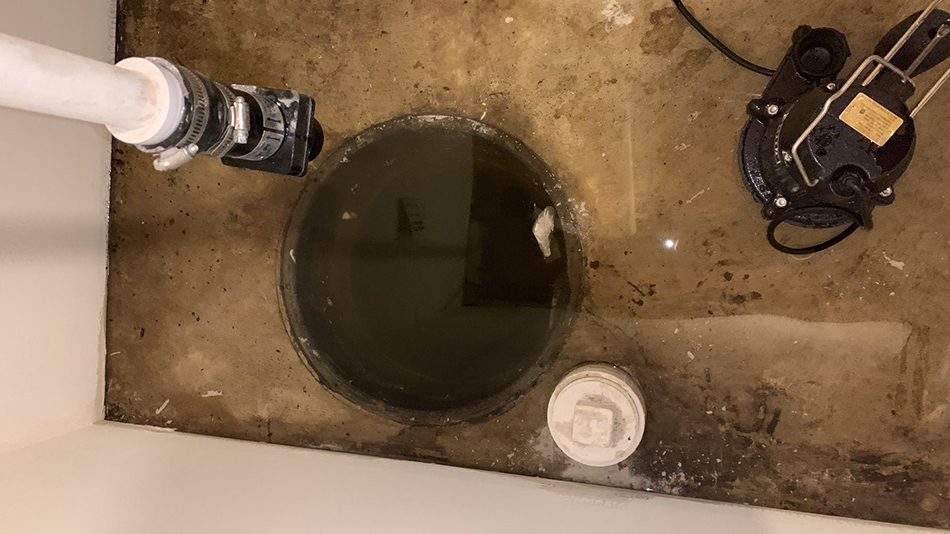Don’t Neglect Water/Sewage Backup Coverage!
Most homeowners are familiar with standard homeowner’s insurance policies that cover damages from events like fire, water losses, and storms, but several aren’t aware of certain exclusions that deny coverage for events like flood and water/sewage back-up from sources such as sewers and failed sump pumps. A lot of people in the Metro found that out the hard way in October 2005, when parts of the area suffered more than 6 inches of rain in a very short time.
While there is generally no coverage for floods and seepage in most standard home insurance policies, there is an endorsement you can add for water and sewer backup coverage as well as sump pump failure. You’d be wise not to turn your back on it!
A few winters ago, we got 2 inches of rain on heavily snow-packed ground and the water had nowhere to go but through the walls of basements and patio doors. Unfortunately, there was no coverage for damaged property. Plenty of people weren’t happy about it, but most if not all insurance companies are consistent with these exclusions.
Are you in a low-lying area? Is your home built on clay? Do you have a high-water table or are you close to a pond, marsh, or river? If so, flood coverage might be something you wish to consider. Your insurance agent can provide some guidance on that. Flood coverage is expensive, and the coverage is limited. Your agent can provide more details and advise on whether this is coverage you should consider.
While a small percentage of people have flood coverage, far more homeowners have water/sewer backup coverage. What is backup coverage? Water back-up coverage, often referred to as sewer back-up coverage, is an optional add-on to a homeowners’ insurance policy. It provides insurance protection if water or sewage backs up into a home through drains, pipes, or sewer lines.
This coverage is crucial because standard homeowners’ insurance policies typically exclude damage caused by back-ups. Based on our experiences in encountering wet basements, we highly recommend adding water/sewage backup coverage at a minimum. Homeowners should also consider adding higher limits to protect against significant loss. This coverage will protect you from damage caused by sewer back-ups and sump pump failure. These losses happen more than you think.
Blocked sewer lines can emanate from several things including city utility work and tree roots. In older communities, sewer line infrastructure has aged and is subject to failure. If the backup emanates from construction work the municipality did, the city or township may be liable but often deny culpability at the onset. Investigations and resulting lawsuits take time to settle. Who pays in the meantime to fix the problem? We have seen entire neighborhoods locked into contentious disputes with local government while liability is ascertained.

Agents tell us they highly recommend the coverage as it is relatively inexpensive for the protection you get. Insurance professionals carefully document and date when they recommended the coverage and note that the policyholder expressly turned down the coverage despite knowing the risks of doing so.
Here’s a horror story every insured needs to hear. It’s a true story about a loss Lindstrom Restoration once encountered. We were called to the home of a young couple who had just completed a $25,000 basement remodel. Then came a massive rainstorm which dumped a foot of water into their new basement. So much for the remodel. Imagine how horrified the couple was when they found out that they had turned down water backup coverage for their last policy renewal. This is a true definition of penny wise and pound foolish. Since the couple didn’t have coverage, the entire room was gutted and they went back to an unfinished basement, since they didn’t have the savings, nor did they want to add onto an existing $25,000 home improvement loan.
It is more common to see homeowners who are underinsured on this coverage. Think about the typical finished basement. It includes such things as bars, furniture, bathrooms, appliances, carpeting, expensive home entertainment systems, computers, and other contents. Typical losses get well into 5 figures very quickly. We see a lot of people with only $5,000 coverage amounts. Consider upping limits. Ask your insurance agent for guidance, but also calculate the value of what it would cost to replace all your contents and do the necessary mitigation and repairs.
Everyone knows sewage backup is nasty. It can render your home unlivable. In some cases, this damage can make your home temporarily uninhabitable. Water/sewer backup endorsements often include coverage for additional living expenses, which can help cover the cost of temporary housing while your home is being mitigated and repaired. Again, check with your agent for sure and get a professional assessment of how much protection you need.
Remember too that sewage backup is nothing you wish to clean up yourself, even minute amounts of it. This is hazardous waste, and the average do-it-yourselfer doesn’t have the protection they need to handle the clean-up safely. Also, the law requires everyone to dispose of waste properly. This isn’t just throwing it in the trash. Thinking about cleaning things up yourself? Check out this website before doing so: https://www.cdc.gov/healthywater/emergency/sanitation-wastewater/workers_handlingwaste.html
Water and sewer backup coverage is an essential addition to your homeowners’ insurance policy. It offers financial protection against unexpected and potentially costly water/sewage backups. Knowing that you are covered gives you peace of mind and ensures that your home and finances are safeguarded when you need it most. While it’s an optional add-on, the investment in water/sewer backup coverage can save you from significant financial hardship. Be sure to consult with your insurance provider to understand your options and choose the coverage that best suits your needs.

Leave a Reply